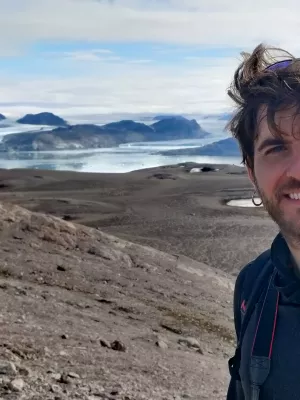
Albert Brangarí
Researcher

The mechanisms underpinning microbial resilience to drying and rewetting – A model analysis
Author
Summary, in English
Soil moisture is one of the most important factors controlling the activity and diversity of soil microorganisms. Soils exposed to pronounced cycles of drying and rewetting (D/RW) exhibit disconnected patterns in microbial growth and respiration at RW. These patterns differ depending on the preceding soil moisture history, leading to contrasting amounts of carbon retained in the soil as biomass versus that respired as CO2. The mechanisms underlying these microbially-induced dynamics are still unclear. In this work, we used the process-based soil microbial model EcoSMMARTS to offer candidate explanations for: i) how soil moisture can shape the structure of microbial communities, ii) how soil moisture history affects the responses during D/RW, iii) what microbial mechanisms control the shape, intensity and duration of these responses, and iv) what carbon sources sustain the increased biogeochemical rates after RW. We first evaluated the response to D/RW in bacterial communities previously exposed to two different stress histories (‘moderate’ vs ‘severe’ soil moisture regimes). We found that both the history of soil moisture and the harshness of the dry period preceding the rewetting shaped the structure and physiology of microbial communities. The characteristics of these communities determined the harshness experienced and the nature of the responses to RW obtained. Modelled communities exposed to extended severe conditions showed a resilient response to D/RW, whereas those exposed to moderate environments exhibited a more sensitive response. We then interchanged the soil moisture regimes and found that the progressive adaptation of microbial physiology and structure to new environmental conditions resulted in a switch in the response patterns. These microbial changes also determined the contribution of biomass synthesis, osmoregulation, mineralization by cell residues, and disruption of soil aggregates to CO2 emissions.
Department/s
- Microbial Ecology
- Microbial Biogeochemistry in Lund
- Centre for Environmental and Climate Science (CEC)
- BECC: Biodiversity and Ecosystem services in a Changing Climate
- MEMEG
Publishing year
2021-11
Language
English
Publication/Series
Soil Biology and Biochemistry
Volume
162
Document type
Journal article
Publisher
Elsevier
Topic
- Soil Science
Keywords
- Birch effect
- Ecological strategies
- Microbial growth
- Soil moisture
- Soil respiration
- Water stress
Status
Published
Research group
- Microbial Ecology
- Microbial Biogeochemistry in Lund
ISBN/ISSN/Other
- ISSN: 0038-0717

